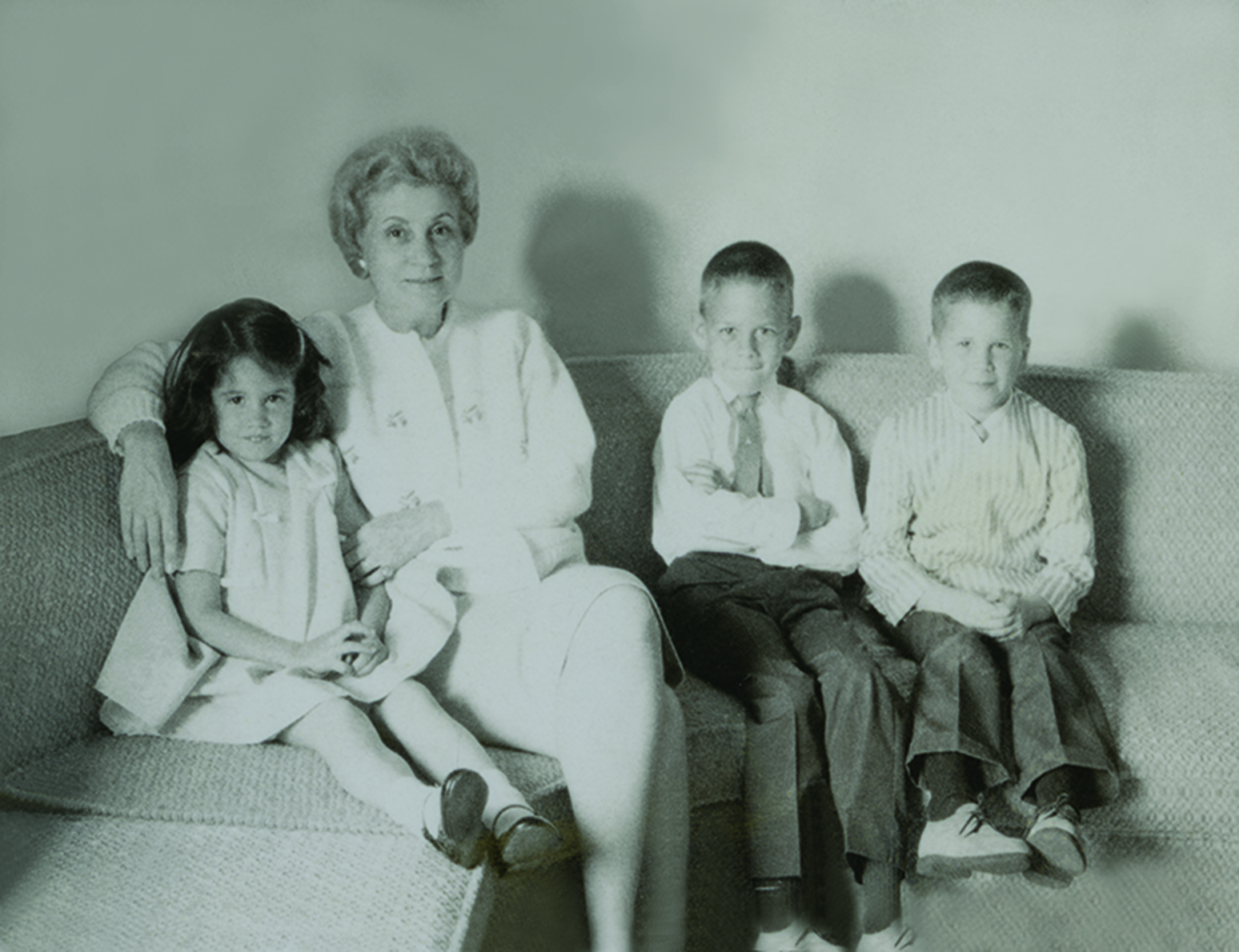1955 - The Blessing of Parenthood
Unable to have children of their own, Frances and Robert Klug’s prayers were answered when they adopted three newborn babies over the course of five years: Jeffrey Robert in 1955, John Robert (Jack) in 1957, and Roberta Marie (Bobette) in 1960.
Frances and Robert cherished their role as parents and accepted the responsibility with love and patience, while sharing the values of love for God, family and neighbor with their children.
Robert continued to work in Los Angeles and advance in the insurance industry. With three young children at home, Frances devoted her time and energy to caring for them.
A Magnificent Vision
One day, Frances put the children down for a nap and stepped into the backyard of their La Habra home to enjoy the sun. From the yard, she looked up and a magnificent Vision appeared. A tremendous black scroll stretched across the sky, thousands of feet wide. She later described the scroll as being made of black chiffon.
The scroll began to unfurl, and as it did, thousands and thousands of diamonds appeared on the scroll. Many were clustered in the middle, while some were scattered around the outer edges. Frances looked at this lovely Vision but was not completely certain what it meant. She was not frightened and understood that the Vision was Heaven-sent, a Miracle from God, and that when and if God wanted her to understand, He would make it known.
Several years later, after the Formal Announcement of The Miracle, it was revealed to her that the Vision of the Diamonds on the Scroll represented the Souls that would be saved through The Miracle of Saint Joseph. In a Revelation delivered in 1992, Saint Joseph, The Holy Spirit, referred to that Vision:
“One day, one of the first Visions that she was given was of a scroll in the sky, permitting diamond-like lights to show through the sheer scroll, and brightening when the scroll was rolled back. Her innocence at that time, We All watched, for she was given the security of mind that What she saw was not imagination but real, and had Purpose in It, had Reason for It, and It would be described in Its fullest at a later time.”




